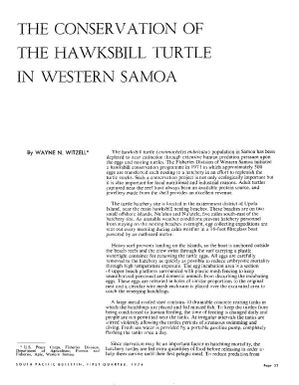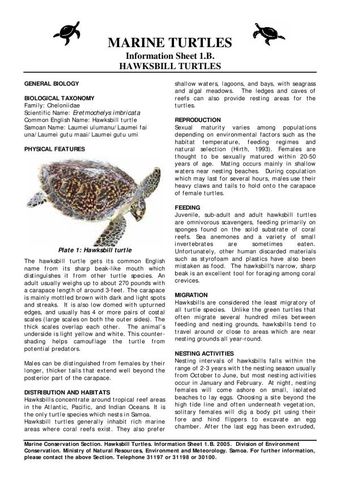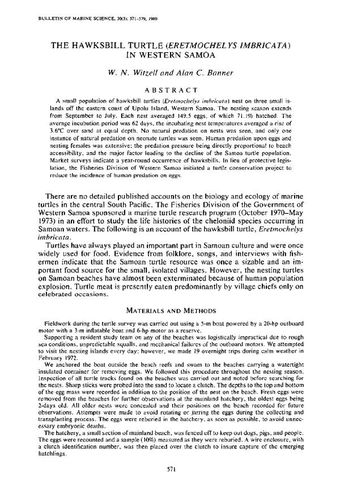The conservation of the hawksbill turtle in Western Samoa
- Description:
- The hawksbill turtle (eretmochetys imbricata) population in Samoa has been depleted to near extinction through extensive human predation pressure upon the eggs and nesting turtles. The Fisheries Division of Western Samoa initiated a hawksbill conservation programme in 1971 in which approximately 500 eggs are transferred each nesting to a hatchery in an effort to replenish the turtle stocks. Such a conservation project is not only ecologically important but it is also important for local nutritional and industrial reasons. Adult turtles captured near the reef have always been an available protein source, and jewellery made from the shell provides an excellent revenue.
- Display date:
- 1974
- Collections:
- Secretariat of the Pacific Regional Environment Programme (SPREP)
- Publisher:
- Department of Agriculture, Forests and Fisheries
- Content partner:
- Secretariat of the Pacific Regional Environment Programme (SPREP)
- Availability:
- Not specified
-
Copyright status: All rights reservedFind out more about what you are able to do with this itemThis item is all rights reserved, with means you'll have to get permission from Secretariat of the Pacific Regional Environment Programme (SPREP) before using it. For more information, please see our use and reuse page.What can I do with this item?Non-infringing useNZ copyright law does not prevent every use of a copyright work, and this item may be hosted by an international institute or organisation. You should consider what you can and cannot do with a copyright work.No sharingYou may not copy and/or share this item with others without further permission. This includes posting it on your blog, using it in a presentation, or any other public use.No modifyingYou are not allowed to adapt or remix this item into any other works.No commercial useYou may not use this item commercially.
Related items
Welcome and warm Pasifik greetings
The information on this site has been gathered from our content partners.
The names, terms, and labels that we present on the site may contain images or voices of deceased persons and may also reflect the bias, norms, and perspective of the period of time in which they were created. We accept that these may not be appropriate today.
If you have any concerns or questions about an item, please contact us.


